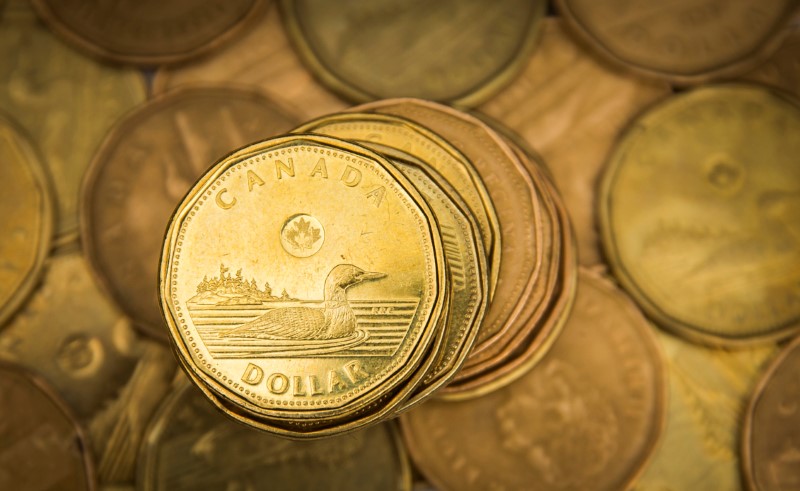By Ketki Saxena
Investing.com -- The Canadian dollar weakened moderately against its US counterpart today as the US dollar was boosted by benchmark 10-year Treasury yields rising to 14-year highs, buoyed by expectations of a hawkish US Federal Reserve.
The Canadian dollar meanwhile was pressured by the risk-off sentiment, although further losses were capped by an uptick in oil prices and hotter-than-expected domestic inflation data.
At 2:25 p.m ET, the USD/CAD pair was up 0.28% at C$1.3777 to a US dollar, and with the day’s range of 1.3719 - 1.3810.
The US dollar - and Fed expectations received a boost from hawkish comments yesterday from Minneapolis Fed President Neel Kashkari and Atlanta Fed President Raphael Bostic, which weighed heavily today on risk sentiment. Resolute hawk Kashkari called for rates to be above 4.75%, while Bostic reiterated the Fed’s need to focus on inflation.
Market pricing indicates a nearly 100% likelihood of a 75 basis point move from the Federal Reserve when it meets on November 1-2. An additional 50 or 75 bps move also looks likely in December.
Meanwhile, a 50 bps move is expected from the Bank of Canada next week (although economists have not ruled out a 75 bp hike), particularly after today’s hotter-than-expected inflation data. However, the Bank of Canada is expected to top out its rate hike cycle - which economists expect is nearing its end - at 4.25%. The Fed meanwhile is expected to hold rates at or above 5% well into next year. This acts as a further headwind for the Canadian Dollar.
Canadian CPI rose 0.1% in September and the annual rate eased from 7.0% to 6.9%, against market expectations of a 6.8% reading. The loonie rose modestly after the numbers, but not enough to counter the greenback’s gains.
The Canadian dollar also gained some support from oil prices following positive indicators of resurgent Chinese oil demand, including further import quotas. The OPEC+ output cut of 2 million BPD, as well as the pending EU ban on Russian crude also supported prices, despite US President Joe Biden’s plan to release 15 million barrels of oil from the Strategic Petroleum Reserve (SPR).
In the view of economists at Scotiabank (TSX:BNS), USD/CAD’s sharp rise through September is showing signs of de-accelerating. However, they note that “USD-bearish price signals are not prompting a significant reaction at this point and the longer run DMIs indicate a lot of residual upside momentum remains in this market.”
“More obvious USD weakness (we think below 1.3650) is needed to inspire a deeper drop at this point.”
Analysts at TD (TSX:TD) agree, noting that they “see strong markers of support and dips in USD/CAD should be shallow” and that buying dips below the 1.36/37 level.”
“To get CAD to strengthen will need to see a relaxation of positive USD catalysts primarily through a Fed pivot and a series of moderation in month-on-month US core CPI. Neither is happening near-term.”
They see the pair hitting 1.40 again in the coming weeks.
